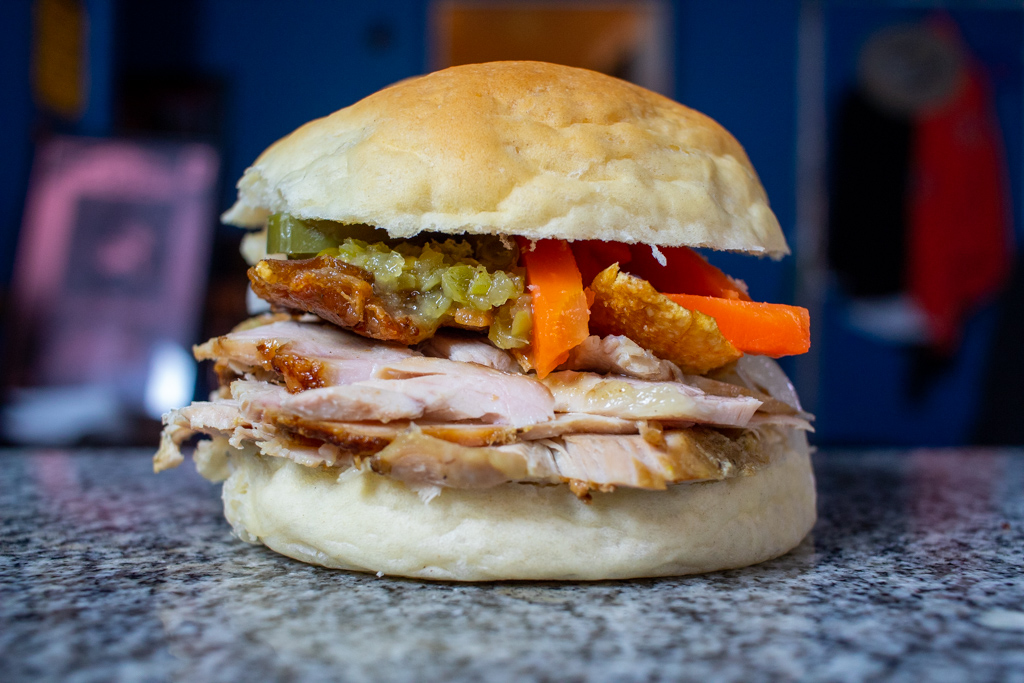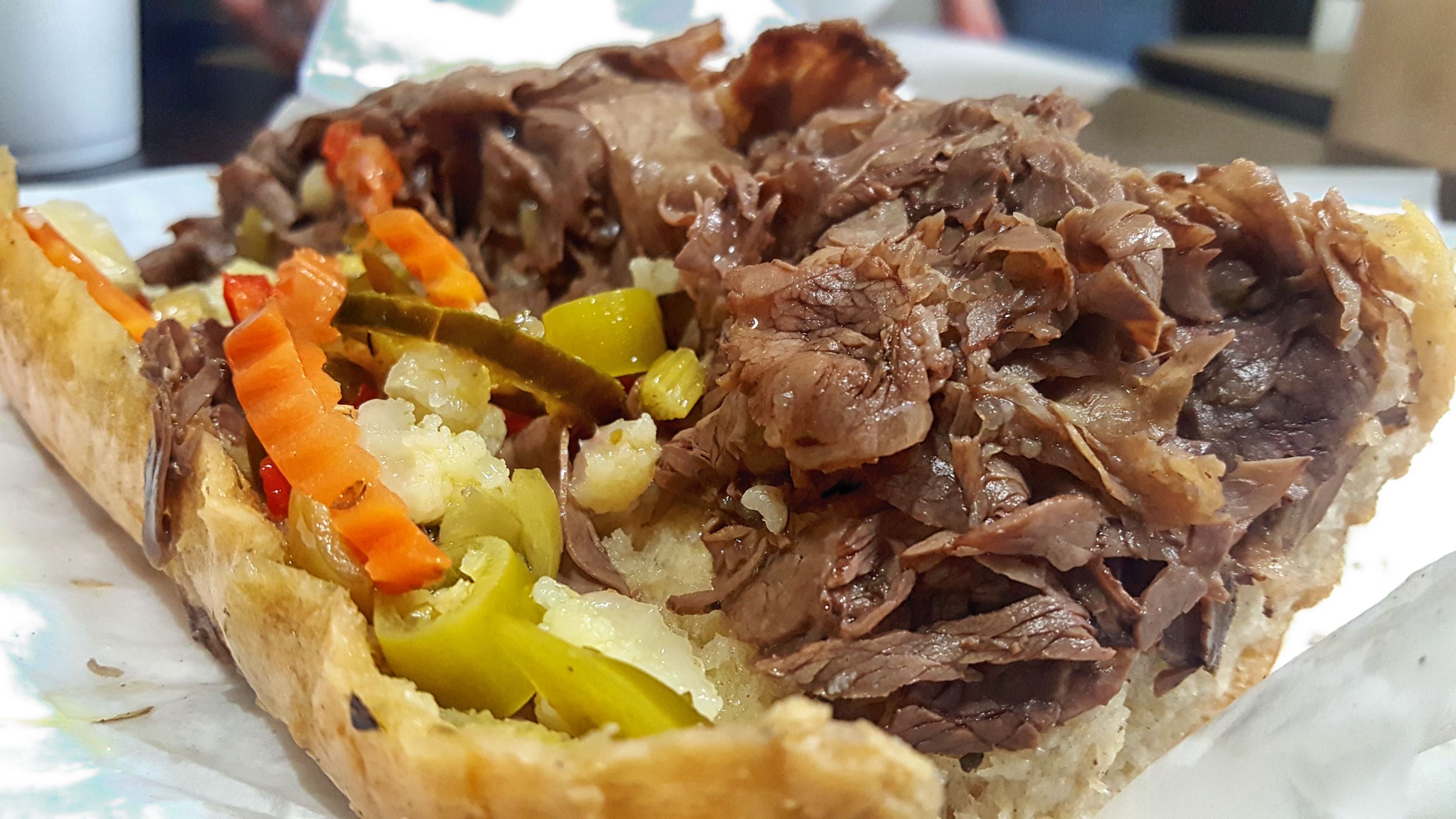Bolivia’s Cholitas and Their Sandwich
Cholo, historically, is not a very nice word. Translating loosely as “mongrel,” it was used as a derogatory term for the descendants of the mestizos, mixed-race offspring of African slaves with the indigenous inhabitants of the lesser Antilles–mainly the Caribs and remnants of the displaced Igneri. In other parts of the Americas, it also indicated mixed descent, but with partial Spanish heritage. There has been, over several hundred years of Latin American history, a complex, shifting, and geographically variant hierarchy of status between those of primarily European heritage, the mestizos of mixed descent, and those of primarily Amerindian ancestry, not to mention the descendants of slaves and indentured servants brought over from Africa and Asia. In many of those interactions, one side might call the other “cholo.”
Members of some Latin American cultures have begun to reclaim the term though. Mexican-Americans since the 1960s have adopted the term, creating a look and a culture that has radiated outward from its East LA roots to other cities in the US and to Mexico itself. Perhaps even more distinctively, ladies of the Aymara and Quechua cultures on the Altiplano and the throughout the Andean highlands of Peru, Bolivia, Chile, Argentina, and Ecuador have taken to wearing clothing reflecting the traditional styles of their people–brightly colored, woolen skirts, blouses, and shawls, tall bowler hats, elaborate arrangements of jewelry adoring their necks, fingers, chests, even their hats.



These women have taken on the name of Chola willingly, proud of their cultures, and in return are referred to by the familiar, affectionate diminutive form of the word–Cholitas. In recent years, Bolivian Cholitas have become politically active, working toward greater recognition and equality for women, and for indigenous women in particular. Since the election of Evo Morales, Bolivia’s first indigenous president, in 2006, Cholitas have taken a more prominent place not only in Bolivian politics, but in fashion, entertainment, in Bolivian culture.
Even before the slow demise of the discrimination against these ladies over the past few decades, Cholas were known for their sandwiches. A famous park in Bolivia’s capital city La Paz is known as Las Cholas after the concentration of Cholita street stalls there selling this sandwich. According to some of the descriptions I read, the sandwich may have once featured beef, but these days a garlicky roast pork, similar to pernil or to the Hornado de Chancho we recently covered on the Tribunal, is the primary ingredient of the sandwich, dressed with a pickled vegetable mixture called escabeche de verduras and some local chili sauce, perhaps some additional salad.
As I mentioned, we just covered Hornados last month, only a few short weeks ago, and at that time I made a roast pork leg that, while tasty, failed to satisfy in a few essential ways. Mostly, the problem was that the skin did not crisp up the way I’d hoped. So I took this opportunity to try another technique on a pierna or leg of pig, where I’d cut the skin and fat back away from the meat, drying it, using lemon juice and baking soda and the sun to draw moisture from the skin before cooking, allowing it to become the chicharrones I had hoped for.

So how did I do?

The skin did very much take on a chicharrones-like texture, though I may have used a bit too much baking soda, as some portions had an alkaline flavor I didn’t care for. The crunch though was right on.
The meat could have been basted more frequently though–it took on a dark color that keeping the surface moist could have helped avoid. The flavor was terrific though. I made a slather of garlic–LOTS of garlic, something like three full heads of it–an onion, lemon juice, olive oil, aji amarillo, salt and pepper, and not only rubbed it all over the surface of the meat but poked holes down into the meat, pushing the slather in with my fingers. I served it that night with a sort of green bean saltado that I wanted to try–yes, despite my well-known aversion to green beans–and a kind of Bolivian take on risotto called arroz con queso.

But why did I want to make a green bean dish to go with this pork roast? Because I had half a pound of green beans left over after making 2 jars of escabeche de verduras. The phrase “escabeche de verduras” translates as “marinated vegetables” and it consists of, at minimum, carrots, onions, and green beans, blanched, then soaked in vinegar for a few days. The recipe I used called for cauliflower as well, and both green and red versions of the South American locoto peppers, which I was unable to source. I did add some slices of jalapeño to give it a little zip though. This mixed pickle, a sort of mild Bolivian giardiniera, can be eaten as a salad but is a required ingredient in the Sandwich de Chola.

The bread for these sandwiches is usually described as a soft roll and sometimes compared to a hamburger bun, though they appear to be wider and flatter. The only Bolivian bread roll recipes I could find were marraquetas, a crusty French roll; cuñapés, a pastry made with tapioca flour and cheese; and pan casera, a roll with a cracking sweet cookie-type crust on top similar to Mexican conchas. None of these seemed to fit the bill, so I used the King Arthur Flour recipe for soft sandwich rolls, squishing them a little wider and flatter with my fingers than the recipe probably called for.

Finally, the hot sauce. Many fans of the sandwich describe a sauce made with aji amarillo as a necessity for giving the Sandwich de Chola a little zesty kick. Last time we covered a Bolivian sandwich though I discovered llajua, a type of chili sauce popular all over Bolivia, made with locoto chilies, tomatoes, and quilquiña, a cilantro-like Bolivian herb related to Mexican pápalo.

It’s time to make the sandwiches.

Starting with one of my soft sandwich rolls, I sliced it heel from crown.

Then I placed a few layers of sliced pork atop the heel of the bun.

I also added some of the cracklings, or chicharrones.

Next I seasoned the meat with llajua sauce.

And then added plenty of the pickled vegetable mix, making sure that all the vegetables–carrot, onion, green bean, cauliflower, even jalapeno–made it into the sandwich.

Then I placed the crown to finish the sandwich.

Chicharrones are underrated as a sandwich ingredient–crisp and salty, fatty yet somehow light, they add disproportionate amounts of flavor, like a bag of salty potato chips if they were made of crisply fried fat and skin. The pork was good, heavy on the garlic in a way that I very much liked, and added in an amount that worked well with the size of the bun and the amount of the other ingredients. The escabeche is good–it falls short of great in that I wanted it, like giardiniera, to retain some of the vegetables’ raw crispness, but the blanching in salted water had taken much of the edge off and left them–not mushy, but soft, retaining their shape yet easily bitten through.


Maybe the crispness of the chicharrones and the additional crispness of pickles raw vegetables would simply be too much texture for this sandwich. As it was, my gripe is a relatively minor one. Soft, fatty, garlicky pork; crisp, salty chicharrones; zesty pickled vegetables; and an herby hot sauce are of course a fantastic combination whatever bread you put them in, and a soft, malleable roll like this does a great job of holding ingredients in until you’re ready to eat them.
And the leftover pork, with some ham, cheese, mustard, and pickles, makes a great pseudo-Cubano as well, if you need some help talking yourself into roasting a 20 pound pork leg
@sandwichidiot Bolivian Sanduiche de Chola #sandwichdechola #porksandwich #escabechedeverduras #llajua #sandwich ♬ original sound – Jim Behymer

I like sandwiches.
I like a lot of other things too but sandwiches are pretty great











Recent Comments